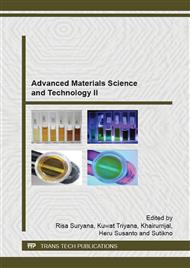p.329
p.333
p.338
p.343
p.348
p.352
p.356
p.360
p.364
Reducing Energy Consumption through Innovative Glass Layering Construction with Polyethylene Bubble Wrap at 2nd Floor Dean Faculty Room
Abstract:
Reducing energy consumption in buildings has been an important and growing concern in most countries since the Kyoto Protocol was entered into force in 2005. For instance, ITS has set the target reduction of greenhouse gases in building and support act as a legal framework for promoting ECO Campus program. Design concept using glass layering construction with bubble wrap can contribute significantly in reducing the required air conditioning system size so annual energy cost decrease too. The objective of this paper is to present an overview of the basic principles of thermal insulation, the example of building energy modeling using polyethylene insulation materials, and to survey the most commonly used building insulation materials as well as their performance characteristics. A “bubble wrap” with a reflective insulation helps to reduce heat loss by reflecting away up to 97% radiant energy with less than 0.05 emittance. The result from this study is 3% to 6% annual energy savings was cited.
Info:
Periodical:
Pages:
348-351
Citation:
Online since:
August 2015
Price:
Сopyright:
© 2015 Trans Tech Publications Ltd. All Rights Reserved
Share:
Citation:


